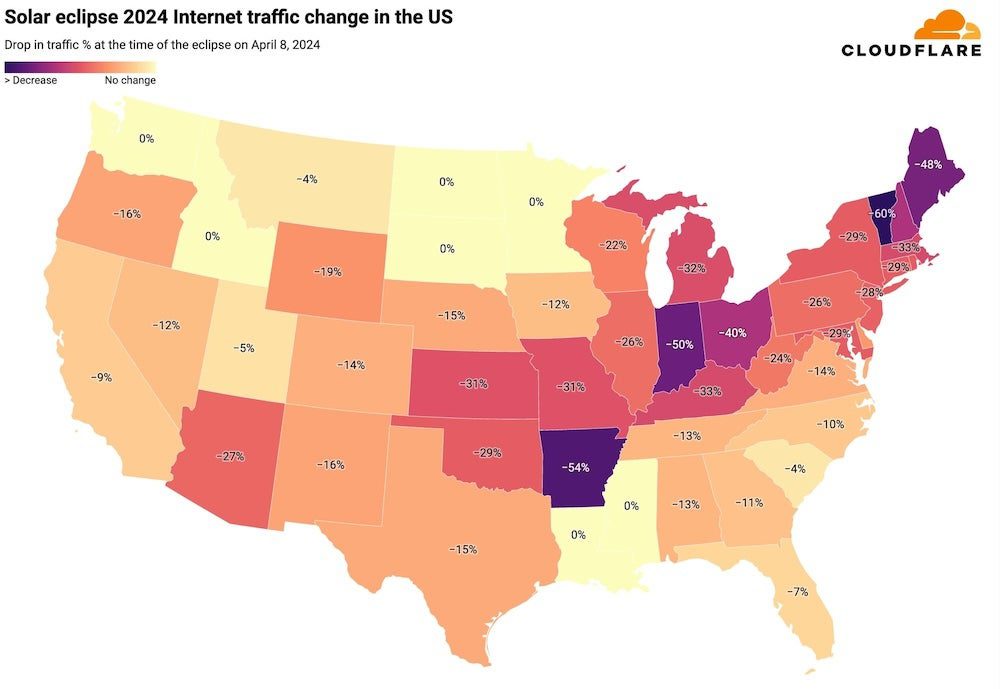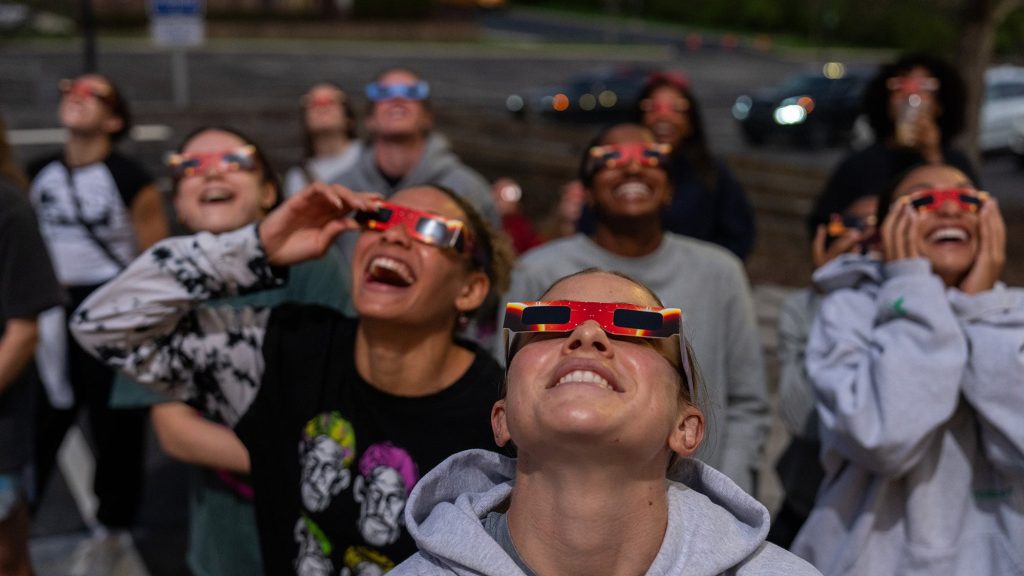New information suggests a rare eclipse that happens only once in a generation is a very effective way to persuade people to finally disconnect from the internet—for at least a short while. According to calculations from cloud-computing provider Cloudflare, the online traffic on yesterday dropped between 40-60 percent compared to the previous week within the path of totality of the April 8 eclipse. In overall terms for the US, “bytes delivered traffic dropped by 8 percent and request traffic by 12 percent as compared to the previous week” around 2:00pm EST.
According to NASA, the path of totality yesterday covered a wide area around 110 miles as it crossed through Mazatlán, Mexico, through 13 states in the US, and finally over Montreal, Canada. In the US alone, an estimated 52 million people lived within the eclipse’s path of totality. And it definitely seems like many of them put away their phones and laptops to go outside and observe.
What a complete eclipse looks like from space.]
As The New York Times points out that Vermont saw the largest decrease in internet usage, with an estimated 60 percent drop compared to the previous week. On the other hand, people in South Carolina seemed to be the least motivated to take a computer break, as their internet traffic only decreased by around four percent.

Interestingly, you can also learn a bit about weather conditions during the eclipse by looking at Cloudflare’s internet usage map of the US. While most of the states within the event’s path show significant decreases, Texas only experienced a 15 percent reduction. But considering a large part of the Lone Star State experienced severe weather conditions, it’s likely many people stayed indoors—maybe even online to watch the eclipse views from other places.
The complete sensory experience of a total eclipse, from inside a convertible in Texas.]
So what were people doing if they weren’t posting about the eclipse? Well, taking photos of the moment is always quite popular, while NASA supervised several volunteer research projects.
Based on Cloudflare’s data, it didn’t take long for people to go back online once the eclipse ended above them. Usage seemed to return to normal levels almost exactly when the eclipse ended in any given state. Without a doubt, most people hurried to share their reactions, photos, and videos… but perhaps yesterday still serves as a nice reminder that there’s much more to see when you take a break and go outside for a while.









